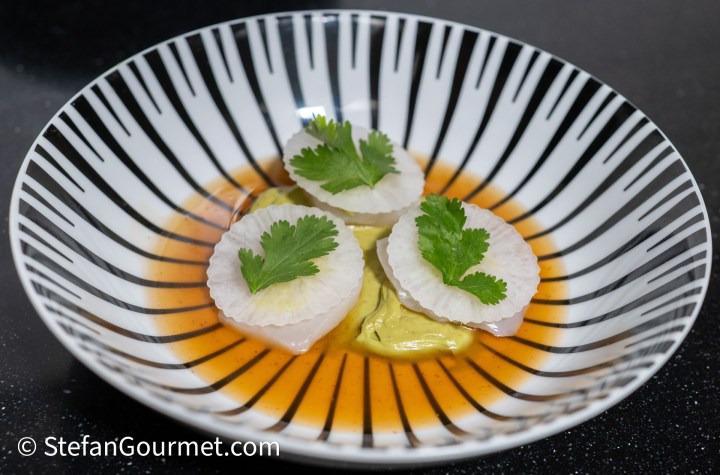
This tasty and elegant, but simple to prepare, appetizer was inspired by a dish I really liked at Wills Domain in Western Australia. As usual, I did not try to prepare an exact copy of the dish, but merely used it as inspiration. And I also tried to make it as simple as possible, using as few ingredients and techniques as possible while still getting the result I was going for.
The hardest part for this dish is probably the shopping, because it contains ingredients that are not carried by most supermarkets:
- As the scallops are not actually cooked, they need to be sashimi grade.
- When shopping for wasabi, make sure to read the label, as a lot of “wasabi” contains less than 1% of actual wasabi.
- Daikon is a giant white radish that you can find in Asian markets.
- Katsuobushi flakes are dried, smoked, and then grated bonito (a type of tuna). It is used to make dashi.
- Konbu is dried kelp, also used to make dashi.
- Avocados are everywhere, but ripe avocados that are not rotten can also be difficult to procure.
Tosazu is a Japanese dressing that is a mixture rice vinegar, sugar or mirin, soy sauce, and dashi. In this dish it is thickened with arrowroot as otherwise it doesn’t cling enough to the other ingredients.
I cooked the scallops sous vide, but you could also steam them very briefly, like they did at the restaurant. The scallops should be barely cooked and very tender rather than rubbery.
Ingredients

For 8 servings as a small appetizer
- 12 scallops
- 2 ripe avocados
- 1 Tbsp freshly squeezed lime juice (about 1/2 lime)
- 1 tsp wasabi paste
- salt
- cilantro or another green garnish
- daikon
For the thickened tosazu dressing
- 120 ml (1/2 cup) rice vinegar
- 120 ml (1/2 cup) water
- 5 grams konbu (dried kelp)
- 5 grams katsuobushi
- 2 Tbsp Japanese soy sauce
- 1 1/2 Tbsp mirin (or sugar)
- 1/2 Tbsp arrowroot powder
Instructions
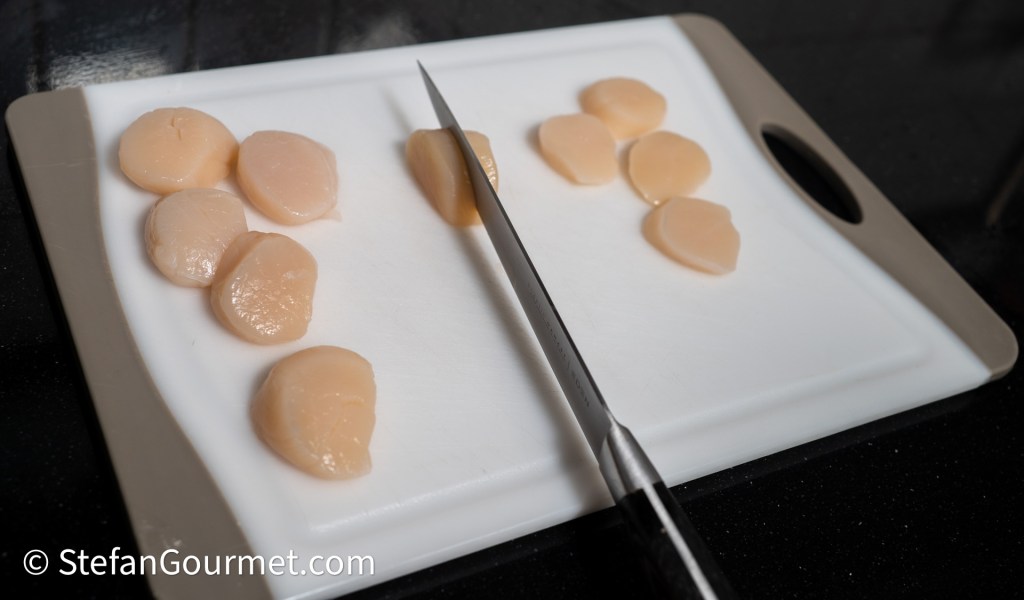
Cut the scallops in halves as shown.
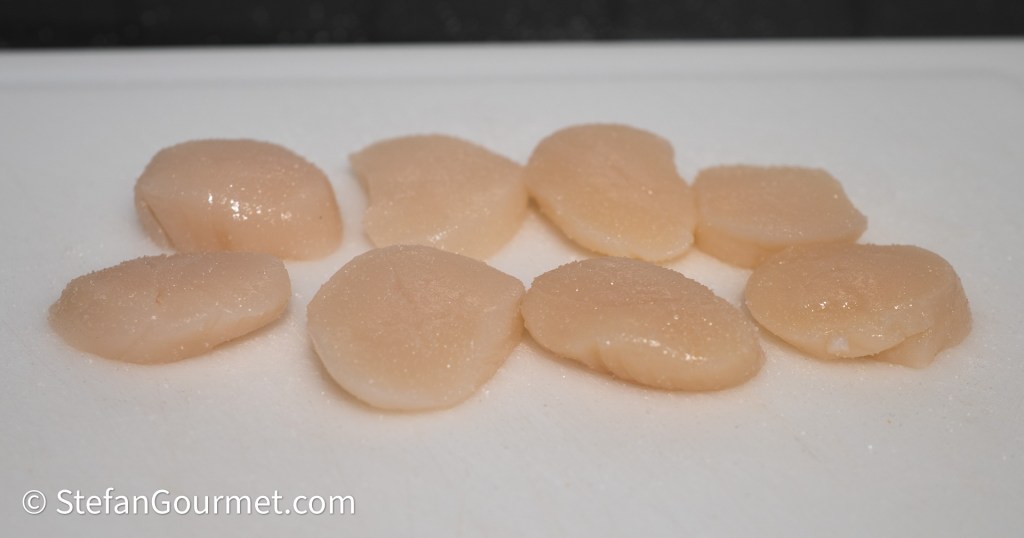
Season the scallops with salt on both sides.
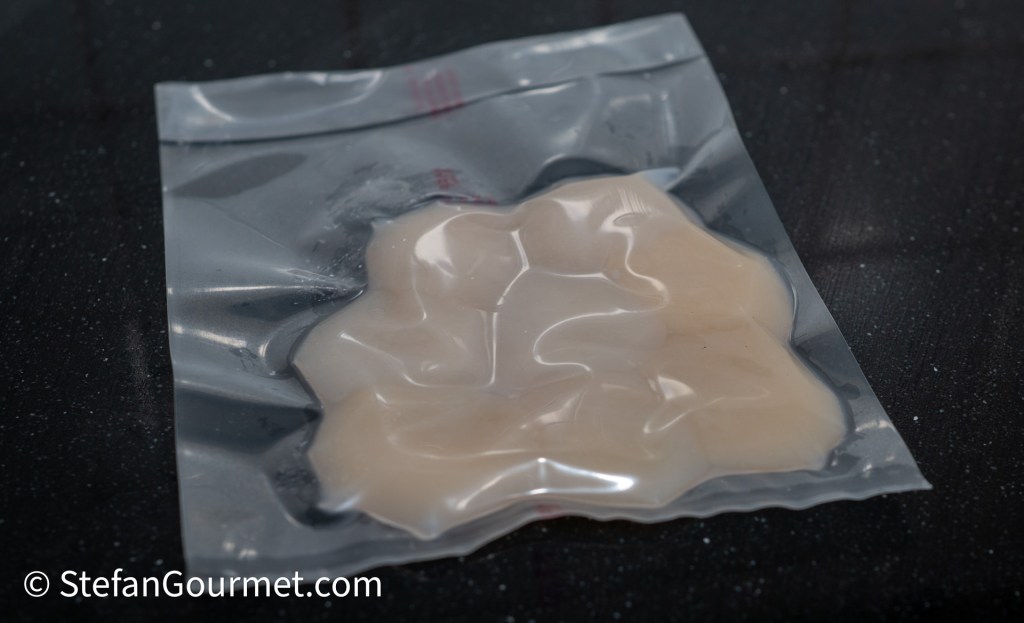
Vacuum seal the salted scallops and allow them to cure for at least an hour in the refrigerator.
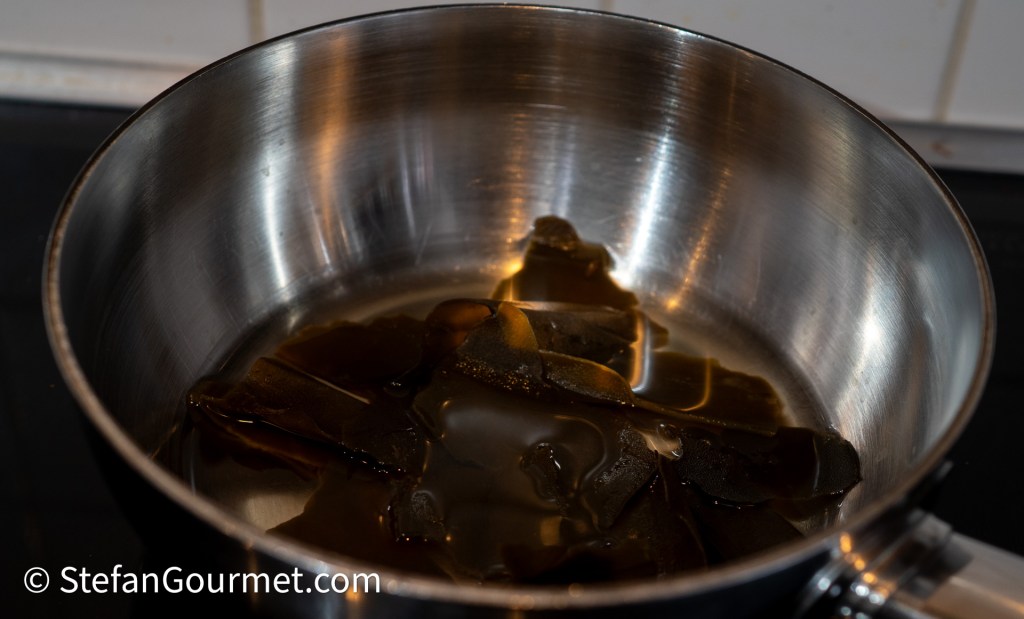
In the meantime, prepare the tosazu dressing. Place 120 ml of water and 5 grams of konbu in a saucepan. Bring almost to a boil, then turn off the heat and allow the konbu to steep in the cooling water.
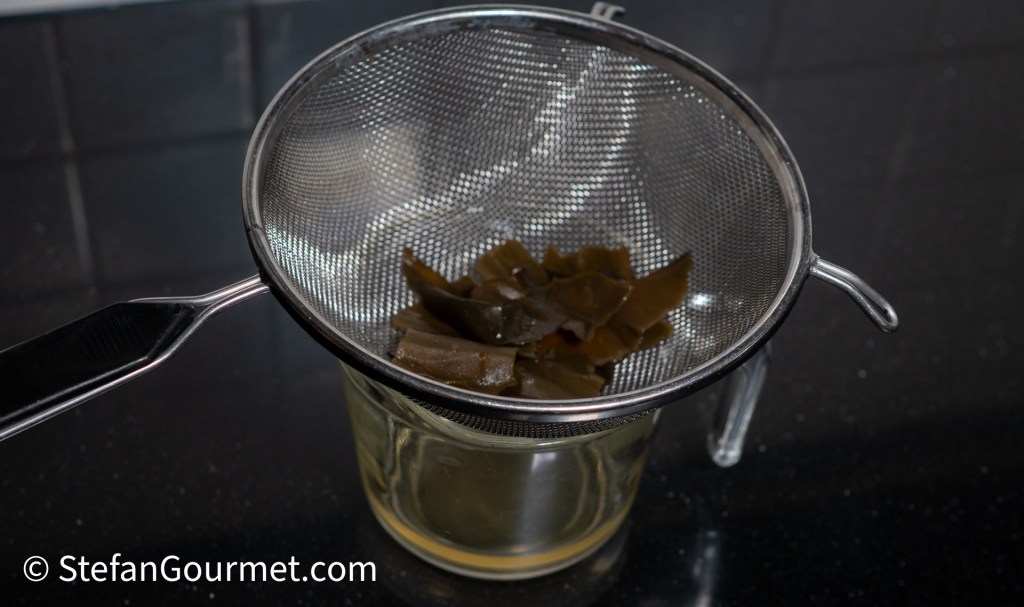
Sieve the water to get rid of the konbu.
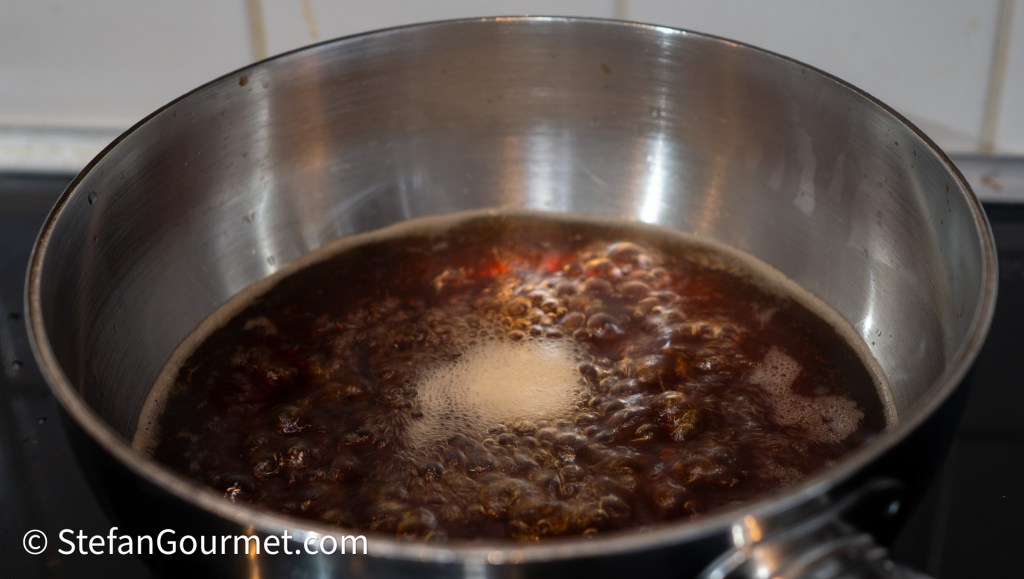
Return the konbu-infused water to the saucepan, and add 120 ml rice vinegar, 2 Tbsp soy sauce, and 1 1/2 Tbsp mirin. Bring to a boil, and allow to simmer briefly. (If using mirin with alcohol, you can put it in the pan first and bring it to a boil to burn off the alcohol. I use mirin for cooking, which does not contain alcohol.)
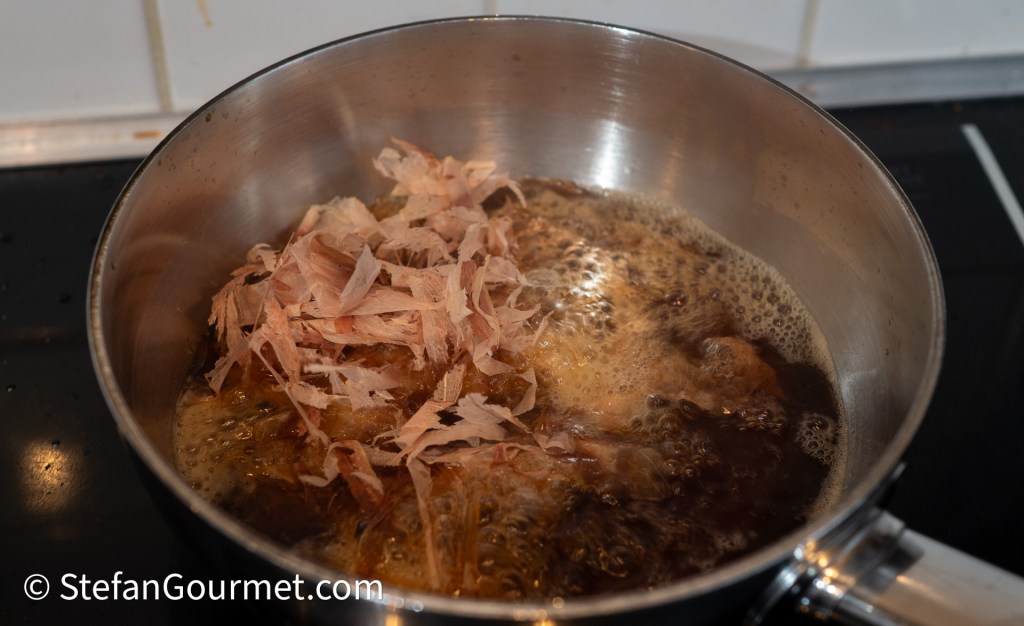
Add 5 grams of katsuobushi…
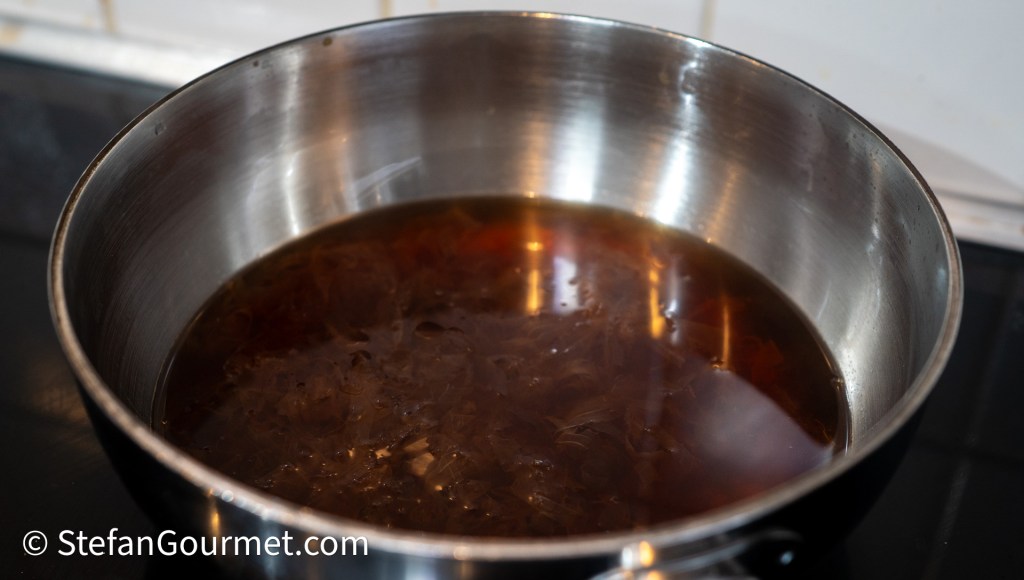
…and stir until completely soaked, then turn off the heat, and allow to steep for 30 seconds.

Sieve the liquid, and discard the katsuobushi.
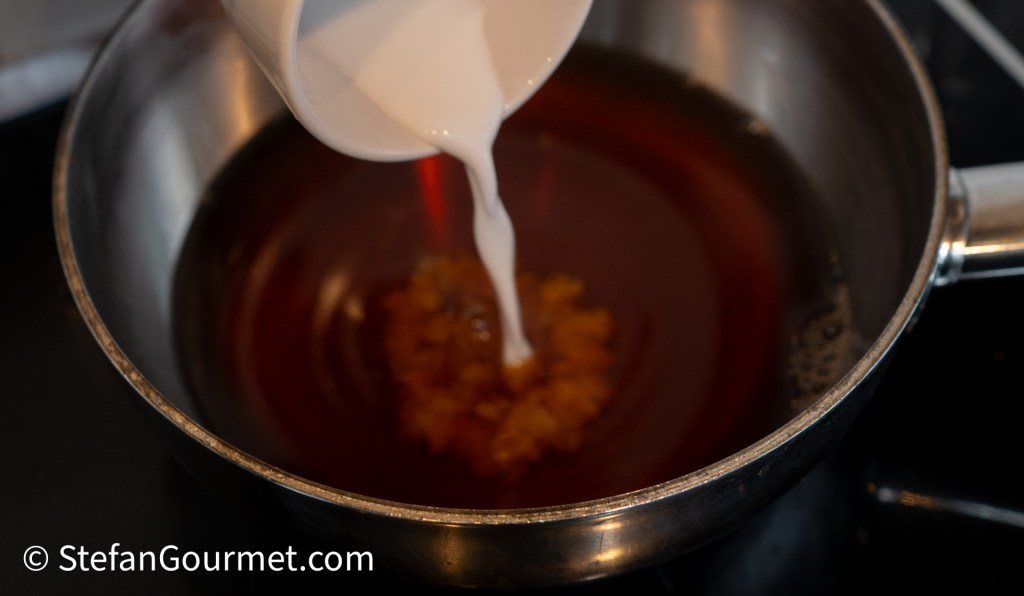
Stir 1/2 tablespoon of arrowroot with 1 tablespoon of cold water until smooth. Return the filtered liquid to the saucepan, and add the arrowroot slurry.
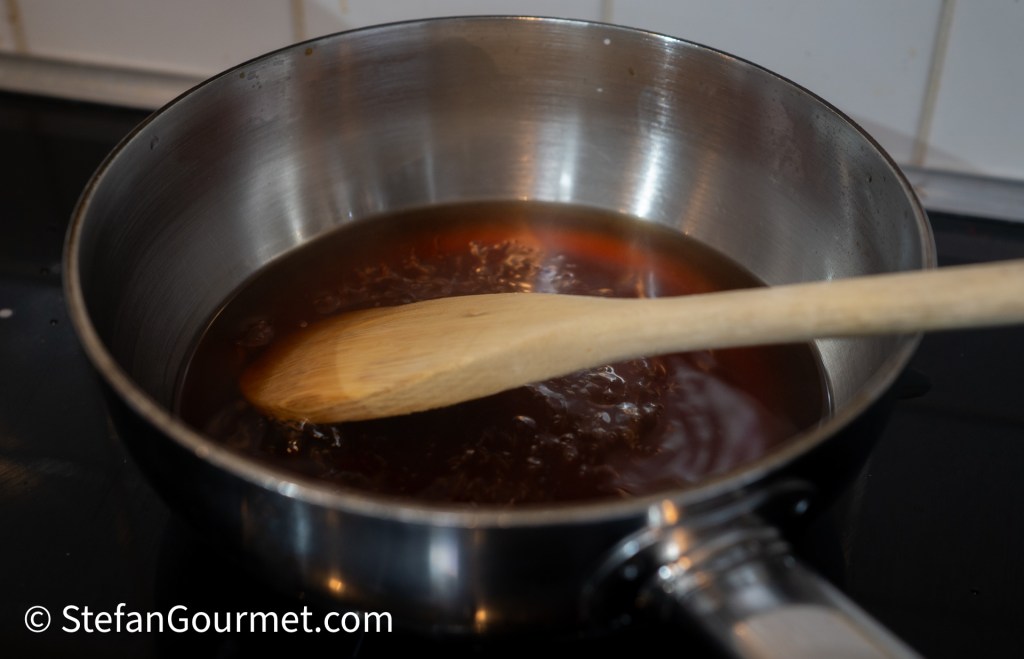
Bring to a boil, stirring, until the liquid has a syrupy consistency. If it is too thin, make some more arrowroot slurry with cold water, and repeat.
Allow the thickened tosazu to cool to room temperature.
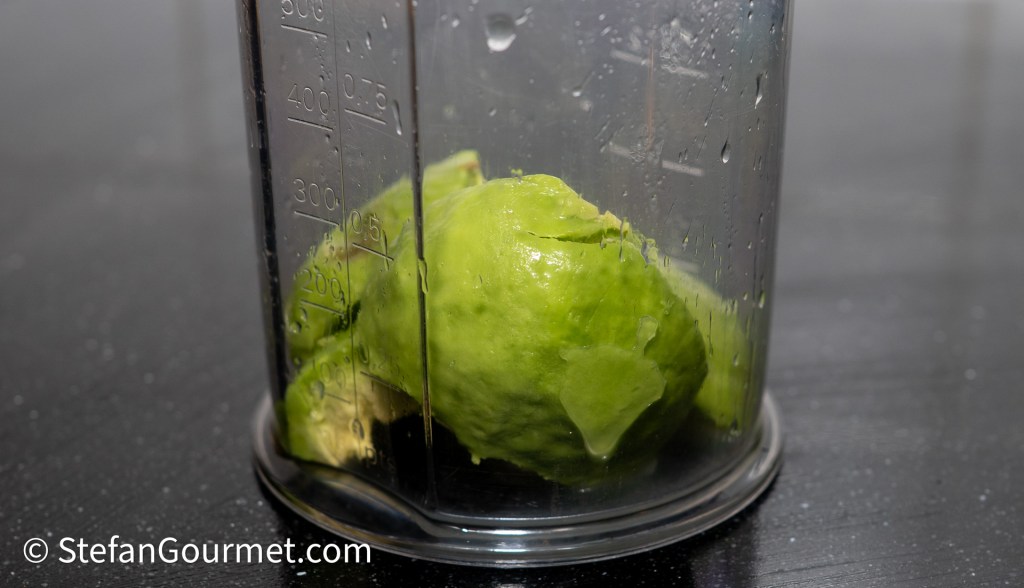
Remove the skin and seed from the avocados, and place in the bowl of a blender, together with 1 tablespoon of freshly squeezed lime juice, and 1/4 teaspoon table salt.
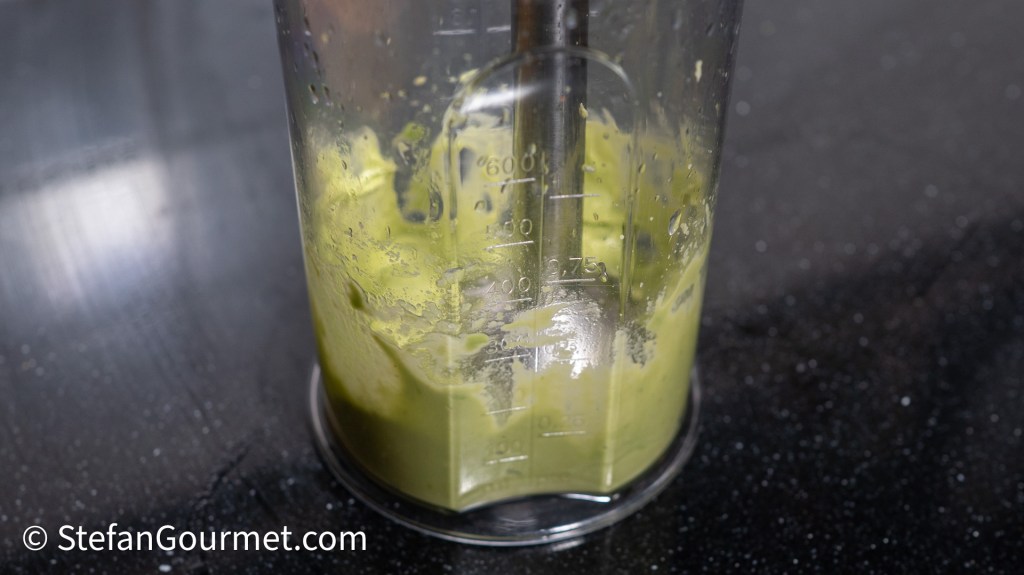
Blend until the avocado cream is smooth. Taste and adjust the seasoning with salt and lime juice, if needed.
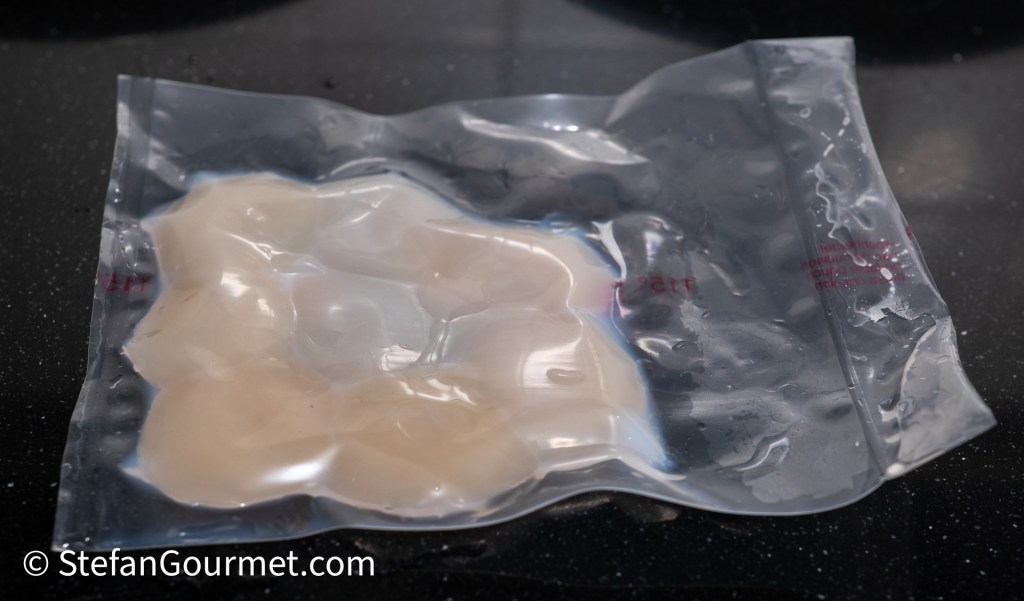
Cook the scallops sous vide for 10 minutes at 42C/108F. Carefully separate them by hand after cooking.

Place some avocado cream on each plate. Arrange the scallops on top, and spread a bit of wasabi paste on each scallop.
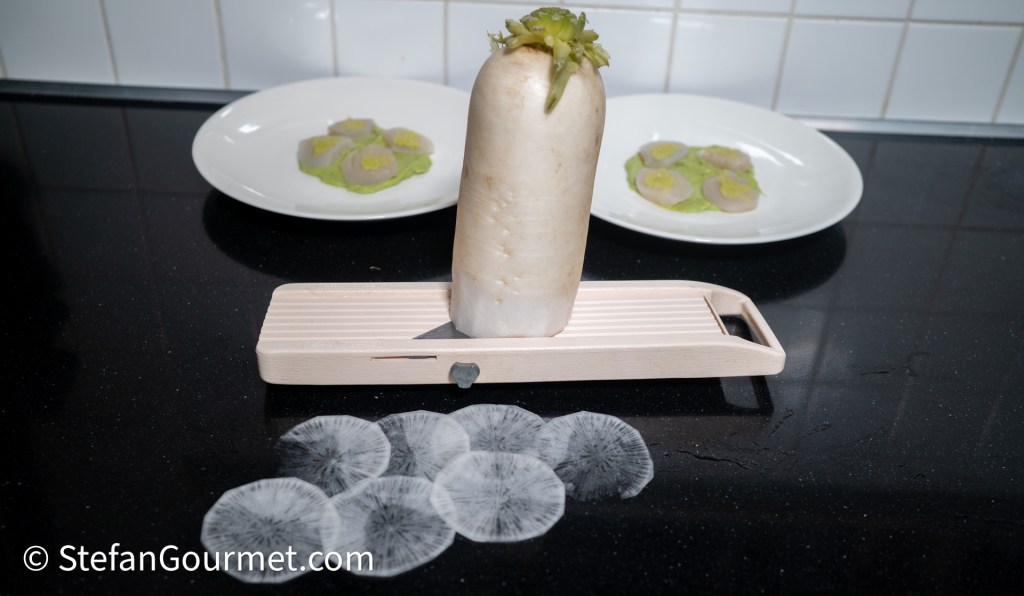
Use a mandoline to slice the daikon very thinly, 3 slices per serving. For a pretty presentation, use a cookie cutter to give the slices a uniform shape. To crisp up the daikon, place the slices in a bowl of cold water for some time. (Then you should slice the daikon earlier.)

Place a slice of daikon on top of each scallop. Garnish with cilantro, and pour the tosazu dressing around. Serve at room temperature.
Wine pairing
At Wills Domain this was paired with their Sauvignon Blanc, and this dish will work with many other Sauvignon Blancs as well. But it also worked very well with a Pinot Gris by Gala Estate, Tasmania, or a Salina Bianco from Sicily (a blend of Cataratto and Inzolia).


This looks awesome Stefan and very elegant. I might borrow it for my next nice dinner as a starter. In this case, do you think the sous vide process adds anything to the dish? Or is it just your preference? I’ve been always evaluating if a dish really needs SV vs not for a variety of reasons. Thoughts?
LikeLiked by 1 person
Hi Elie, it doesn’t add anything, you’d get a very similar result by very briefly steaming the scallops. I just find it more secure (no risk of overcooking the scallops, which would certainly ruin the dish) and easier (also for the curing part). At the restaurant they also steamed them.
LikeLiked by 1 person
Looks lovely. It has been difficult to find good avocados here right now, even when they feel perfect they are sometimes still brown splotched on the inside.
LikeLiked by 1 person
That’s exactly the problem I often have, too.
LikeLiked by 1 person
Great to see you blogging! You have been missed. Beautiful simple dish totally ‘my style’! Did not know a ‘tosazu’ dressing – no problems here with the ingredients of course! My country supermarket does keep all. And you have plated the dish beautifully – love the ‘stripey’ dish 🙂 ! I always buy my avocadoes still hard and ripen them under my own careful eye. We may be luckier in the “Lucky Country’ but have had few problems.
LikeLiked by 1 person
These scallops must be delicious
LikeLiked by 1 person
Thank you, they were
LikeLike
I use FDA guidelines of freezing fish for sashimi at below -20C for a week which is cheaper than buying sushi grade fish typically frozen at-30C for 24 hours to kill parasites. Would you know if it is the same story for scallops?
LikeLiked by 1 person
It is the same story for scallops. I use high quality Japanese scallops that are already frozen. But if I can get fresh live scallops in the shell, I will use them without freezing, accepting the risk of parasites.
LikeLike